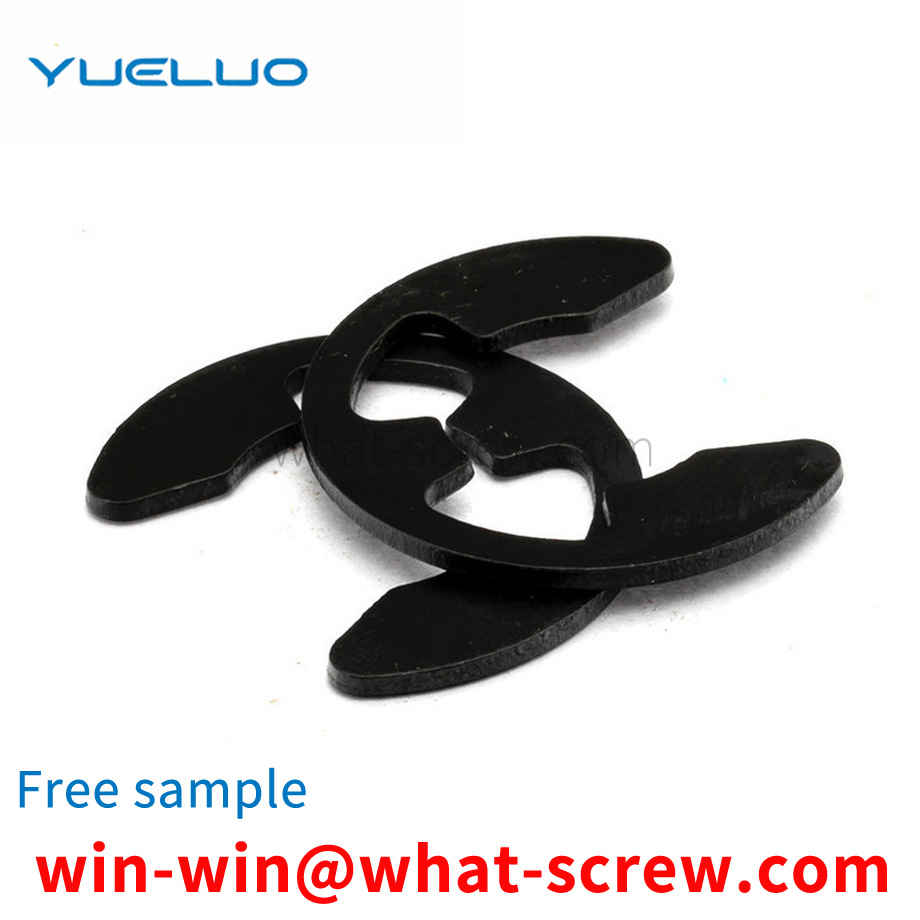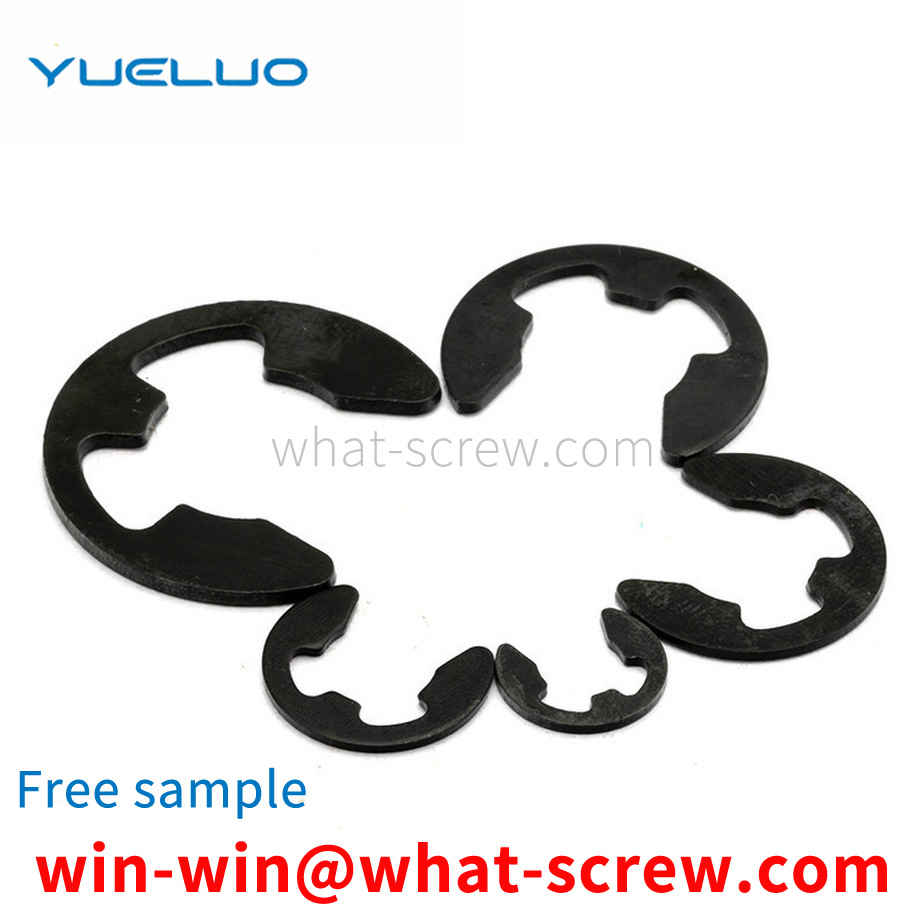Type 1) Slotted ordinary screws are mostly used for the connection of smaller parts. It has pan head screws, cylinder head screws, countersunk head screws and countersunk head screws. The head strength of pan head screws and cylinder head screws is high, and they are connected to common parts; the head of semi-countersunk head screws is arc-shaped, and its top is slightly exposed after installation, and it is beautiful and smooth. It is generally used for instruments or Precision machinery; countersunk head screws are used where the nail head is not allowed to be exposed. 2) The head of the hexagon socket head cap screw and the hexagon socket head flower screw can be embedded in the component, which can apply a large torque and have a high connection strength, which can replace the hexagonal bolt. It is often used in joints where compact structure and smooth appearance are required. 3) Cross recessed ordinary screws have similar functions to slotted ordinary screws, and can be replaced by each other, but the cross recessed ordinary screws have higher groove strength, are not easy to be bald, and have a more beautiful appearance. When using it, it must be loaded and unloaded with the matching cross-shaped screwdriver. 4) Lifting ring screw Lifting ring screw is a kind of hardware accessories for load-bearing during installation and transportation. When in use, the screw must be screwed in to the position where the supporting surface is tightly fitted, and tools are not allowed to be tightened, nor is a load perpendicular to the plane of the lifting ring allowed to act on it. 5) Set screws Set screws are used to fix the relative position of the parts. Screw the set screw into the screw hole of the part to be fastened, and press its end against the surface of the other part, that is, to fix the former part on the latter part. Set screws are usually made of steel or stainless steel, and their end shapes are conical, concave, flat, cylindrical and stepped. The end of the tapered or concave end set screw directly presses the parts, and is generally used in places that are not often disassembled after installation; the end of the flat end set screw is smooth and does not damage the surface of the parts after tightening, and is used for frequent adjustment of the position. At the connection, only a small load can be transmitted; the cylindrical end fixing screw is used in the fixed position that needs to be adjusted frequently, it can withstand a large load, but the anti-loosening performance is poor, and anti-loosening measures should be taken when fixing; Set screws are suitable for fixing parts with thicker walls. 6) Self-tapping screws When self-tapping screws are used on the connected parts, threads may not be pre-made at the connected parts. Use the screw to tap the thread directly when connecting. It is often used to join thin metal plates. There are two types of taper end tapping screws and flat end tapping screws. 7) Self-tapping locking screw Self-tapping locking screw not only has self-tapping effect, but also has low screw-in torque and high locking performance. Its thread is a triangular section, and the surface of the screw is hardened and has high hardness. Its thread specifications are M2 ~ M12.
(1) The surface rust, oil stains, burrs on the wall of the bolt holes, welding flashes, etc. should be cleaned up. (2) After the contact friction surface is treated, the specified anti-scratch coefficient requirements must be met. The high-strength bolts used should have matching nuts and washers, which should be used in accordance with the matching and should not be interchanged. (3) When the friction surface of the treated component is installed, it is not allowed to be stained with oil, soil and other sundries. (4) The friction surface of the module should be kept dry during installation and should not be operated in the rain. (5) Strictly check and correct the deformation of the connected steel plates before installation. (6) It is forbidden to hammer into the bolt during installation to prevent damage to the bolt thread. (7) The electric wrench, which is regularly tested during use, ensures the accuracy of the torque and operates in the correct tightening sequence. Main safety technical measures (1) The size of the wrench of the adjustable wrench should be consistent with the size of the nut, and the sleeve should not be added to the small wrench. A dead wrench should be used for high-altitude work. For example, when using an adjustable wrench, use a rope to fasten it, and people should fasten their seat belts. (2) When assembling the connecting bolts of steel components, it is strictly forbidden to insert your hands into the connecting surface or touch the screw holes. When picking and placing the bolster, your fingers should be placed on both sides of the bolster.
3. Friction coefficient The friction angle is an important factor affecting the torque, and the existence of friction is the basis for the normal operation of the lock nut. When the lock nut is working, the contact surface has pressure and friction under the action of the elastic restoring force of the thread piece. During the repeated use, the rough position and edges and corners of the contact surface are ground and smoothed under the action of cyclic friction. The coefficient of friction becomes smaller, which in turn reduces the maximum unscrewing torque of the nut.
Usually, a tight fit is used between the cylindrical pin and the pin hole, such as the cooperation between the cylindrical pin and the pin hole on the rotating shaft of the motor. Due to the tight fitting structure between the cylindrical pin and the pin hole, the shaft with the pin hole needs to be well positioned during assembly, and then the cylindrical pin is aligned with the pin hole, and then knocked or pressed to fit. The cylindrical pin is pressed into the pin hole. There is no device specially used for the installation of cylindrical pins in the prior art, and two or more people are required to cooperate to install the cylindrical pins into the pin holes. installation quality.
In actual use, the rivet rod body 3-2 is passed through the riveting plate 6 and the riveting plate 7, and the rivet dome head 3-1 is placed in the mold cavity 1-1, and the cover mold 2 is driven by the riveting machine to impact the rivet rod body 3-2. Because the center of the cover mold 2 is provided with a cavity 2-1 that matches the shape of the rivet dome 3-3, the end of the rivet rod 3-2 will form the rivet dome 3-3. However, due to the rivet When the riveting machine is impacted and vibrated, a large amount of oxide slag 4 will be generated, and the oxide slag 4 will slide down the surface of the cavity 1-1 to the bottom of the cavity 1-1 and accumulate. At this time, the temperature of the rivet is very high and the plasticity is very good. The hardness is extremely low and it is easy to form. Therefore, the accumulated oxide slag 4 squeezes the surface of the rivet dome 3-1 and the bottom surface of the cavity 1-1 to form pits, and causes wear on the bottom surface of the cavity, not only It affects the riveting quality, riveting strength and appearance quality of the rivet, and also affects the quality of the rivet die, resulting in economic losses.
We have many years of experience in the production and sales of screws, nuts, flat washers, etc. The main products are: short head screws, rivets, German standard galvanized, blackened high-strength screws and other products, we can provide you with suitable fasteners for you solution.



















 Service Hotline
Service Hotline




